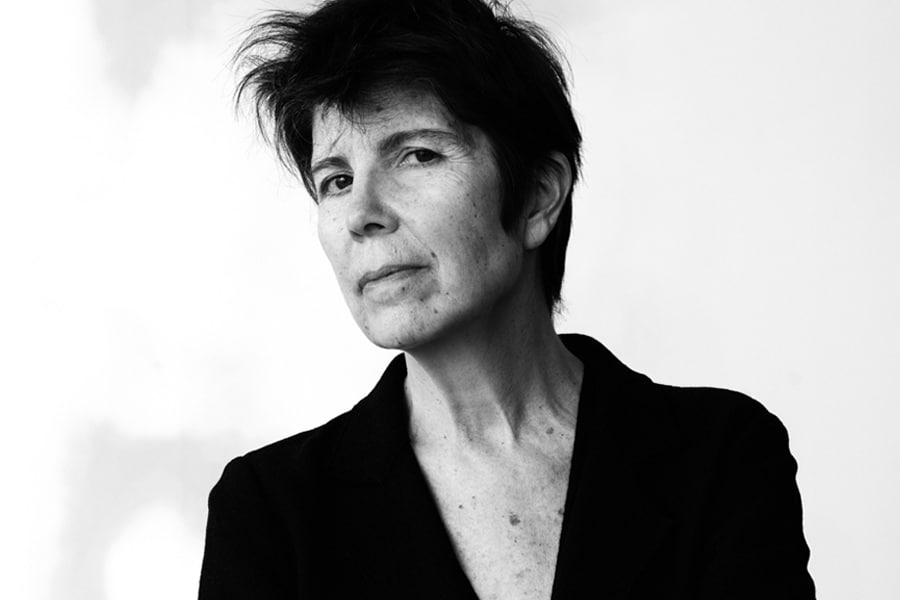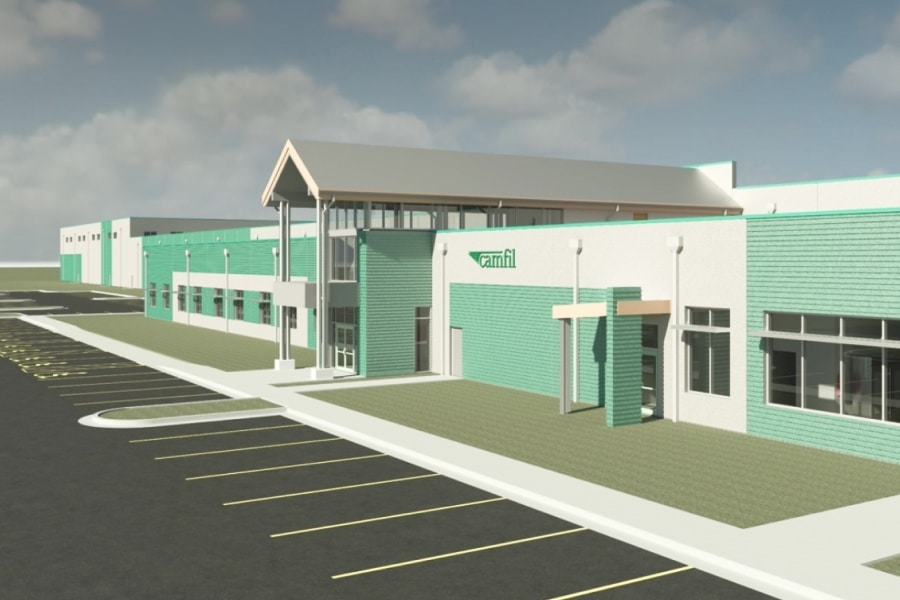Architect Liz Diller finds inspiration in blurring the line between art and architecture.
Her groundbreaking work is designed to inspire a sense of experience. In structures like Manhattan’s High Line or Los Angeles’ Broad Museum—whose sculpted facade has become a landmark of the city’s arts district—Diller creates spaces that engage the people who pass through them.
Diller’s structures have a unique presence, a sense of significance that forces onlookers to pause and engage with their surroundings.
Artistic inspiration
It should come as no surprise that Diller, who has designed a number of museums, including The Museum of Modern Art’s recent expansion, began her career as an artist.
“I went to school at the Cooper Union to study art,” Diller said. “I was interested in film and multimedia installations. On a whim, I saw a class called ‘Architectonics’ in the course catalog and I was curious about what it meant. I slowly became interested in the discourse around architecture and got more broadly interested in the discipline, but not in the profession. Previously, I was interested in photography and time-based media, but I started to think in three dimensions.”
To her surprise, Diller became captivated by the way her fellow architecture students discussed this new medium.
“In the art school, there wasn’t a lot of discussion about what you did, what it meant and why you did it, or how you positioned yourself relative to history or theory,” she explained. “In the architecture school, we spoke about the discipline constantly—its history and intersection with other fields. I was seduced by those conversations, so I decided to get an architecture degree, but not with the intent of joining the profession. My only intent was to make a career in plastic arts and work with sculpture and media in a spatial way. I became keenly interested in working in space and time.”
ALSO ON BUILT:
Diller’s burgeoning interest in the possibilities of architecture as a form of artistic expression were encouraged by her mentor, John Hejduk, the dean at Cooper Union. “If I had found myself in any other architecture school, I probably wouldn’t have stayed because I had very little interest in making buildings,” Diller said. “Hejduk taught me that architecture included so much more than buildings. His references at that time were very selective, many of them were from early 20th century literature, film, poetry, painting and sculpture—all outside of architecture. Entering Hejduk’s universe was liberating.”
At the same time, Diller found herself intrigued by contemporary artists in her New York environment whose work realigned the relationship between art and the built world. “I was also fascinated by what was happening around the corner in real time,” she said. “It was the mid- to late 1970s and Vito Acconci, Gordon Matta-Clark and Trisha Brown all had alternative spatial practices.”
Diller saw these artists as models for her career, which she still imagined would occur within the gallery space, rather than constructing these very spaces. “I imagined my work would relate more to those artists,” she said.
Beyond building
After she graduated from school, Diller maintained her idiosyncratic approach to the art of architecture. “Ric [longtime creative partner Ricardo Scofidio] and I started as dissidents in the early 1980s, challenging the institution of architecture as this very self-contained discipline,” Diller said. “We set out to make space on our own terms with our own agendas, independent of clients, budgets and legal constraints, and we worked on borrowed or stolen sites, always in the space of the public.”
One of their first architectural commissions was an unrealized project called the Slow House, designed to exist at the nexus of art and architecture. “Our client had a beautiful site in Sag Harbor overlooking the sea toward the horizon,” Diller said. “We started by thinking about how real estate ads promoted water views—ocean views, coastal views, bay views, protected water views, partial water views. There was a nomenclature based on these minute distinctions.”
‘We live in a time where architecture just feels too slow. From the time you have an idea, to the time you design it, to the time that it’s constructed and occupied, it’s rarely fewer than five years, and oftentimes much longer. Architecture is geo-fixed, it’s heavy, it’s cumbersome and in place for good. And it’s expensive.’
Liz Diller
The idea of the sea view as being the reason for the structure’s existence inspired Diller and Scofidio to create a space whose function was designed for the art of looking outward toward the sea.
“The Slow House became simply a door that led to a huge picture window fronting the sea,” Diller said. “But we wanted to do more than just frame the view. We wanted to record the view, to play the good weather view back in bad weather, to zoom in and pan. We wanted to extend vision with the capability of video. A live camera was mounted on a tall stack opposite the chimney. The view from the camera was broadcast onto a screen in front of the picture window. By juxtaposing the two views, there was really no major difference between mediated and unmediated experience.”
Although the Slow House has yet to be built, this initial design went on to inspire the firm that would go on to become Diller Scofidio + Renfro—and its unique approach to the structures it designs.
A flexible approach to space
It’s fitting that The Shed, one of the designs Diller is most proud of, took inspiration from another unrealized project, artist Cedric Price’s fun palace.
“Our studio got involved in the design of The Shed very early in 2008 at the height of the recession,” she said. “We responded with our friend, David Rockwell, with both a physical and theoretical strategy for a flexible building—an ‘architecture of infrastructure’ that could house all the creative disciplines under one roof. We proposed an architecture so flexible it could even change the size of its footprint. And now, 11 years later, The Shed is an independent nonprofit organization on sovereign land at Hudson Yards.”
The Shed is able to change shape—and even size—dependent on the needs of the people who use it, a flexibility that Diller said was inspired by a frustration she often feels when faced with the slow pace of contemporary architectural practices.
“We live in a time where architecture just feels too slow,” she said. “From the time you have an idea, to the time you design it, to the time that it’s constructed and occupied, it’s rarely fewer than five years, and oftentimes much longer. Architecture is geo-fixed, it’s heavy, it’s cumbersome and in place for good. And it’s expensive.”
With The Shed, Diller and her collaborators hoped to create the blueprint for a more flexible kind of built space. “Architecture is everything that’s contrary to contemporary art, which, by definition, is constantly in flux,” she said. “The challenge is, how do you build a permanent building for a discipline that is constantly evolving? The Shed is a response to that question.”
Diller hopes that her work will continue to be able to respond to the changing needs of artistic and urban communities.
“We want to continue to work at that level of ground-up involvement—to not just inherit received programs where we simply interpret and make formal adjustments,” she said. “We want to conceive programs from scratch and find the right collaborators and cities.”












